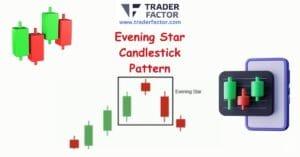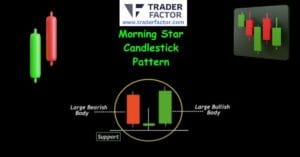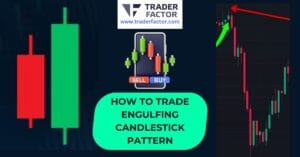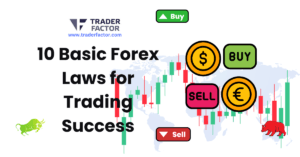The intricate world of forex trading is filled with various concepts, strategies, and techniques, and understanding what is divergence in forex is a key element to mastering this realm. Divergence refers to the disparity between the price action of a currency pair and a technical indicator, offering potential hints of market trend changes. This blog will delve into the depths of forex divergence, exploring its types, the role of key technical indicators, and how to effectively trade divergences while avoiding common pitfalls.
Table of Contents
ToggleKey Takeaways
Divergence is an important tool in forex trading, allowing traders to identify potential trend reversals or continuations.
Various types of divergences can be identified with the use of technical indicators such as MACD and RSI.
Trading divergence effectively requires confirmation signals, timing entries and exits appropriately, risk management strategies as well as avoiding common mistakes like relying solely on divergence signals.

Understanding Divergence in Forex Trading

In forex trading, major changes in the market are often triggered by a divergence indicator. This happens when a currency pair moves one way but its technical indicator goes against it, suggesting that there may be an impending change in direction of the trend. With this insight at hand, traders can make more informed decisions and potentially benefit from their knowledge with strategies such as the widely used divergent trading strategy. Understanding these concepts is essential for success within any given system involving currency pairs’ movements or fluctuations on markets generally.
Definition of Divergence
Divergence trading is a crucial concept to understand for effective forex trading. It concerns the disparity between the direction of a currency pair’s price movement and that of its associated technical indicator, which can be used as an indication that there may be either trend reversal or continuation in progress. It should always form part of any comprehensive investment strategy along with other analysis tools so trades are more likely to succeed. Although not all divergence signals lead to profitable results, recognizing them properly helps identify potential opportunities by combining past movements and current conditions within one overall picture.

The Role of Divergence in Forex Trading
In the world of forex trading, identifying divergence signals can be extremely beneficial in making informed decisions about potential trading opportunities. This occurs when there is a shift between various indicators which may point towards either bullish or bearish divergences. For example, if regular bullish divergence appears, then it could indicate an uptrend replacing its current downtrend and vice versa for any upcoming regular bearish divergence or movements. Being able to accurately read these indications will sharpen a trader’s skillset and enable them to pinpoint potentially lucrative trend shifts on the market quickly.
Types of Divergences in Forex Trading

In the forex market, traders must be aware of three main types of divergences: regular, hidden and extended. Knowledge regarding each is essential for correctly decoding divergence signals to aid in making well-considered trading decisions.
Regular Divergence
In the world of forex trading, regular divergence is a frequent phenomenon that usually indicates an impending reversal in trends. This occurs when currency pair movements go against those from technical indicators, and can be bullish – indicating lower lows for prices but higher lows on the indicator. Or bearish – with highs on prices being opposed by decreases in the indicator’s readings. Such regular divergences are incredibly useful to traders as they may help them identify upcoming market trend shifts and adjust their strategies accordingly.

For instance, upon recognizing a signal of bullish divergence one might decide it would be best to enter long positions as this could point towards potential upward movement while regularly observed bearish divergence could recommend exiting existing trades quickly or moving into shorts if there appears likely downward progression ahead.
Overall understanding these patterns presents excellent opportunities for intelligent decision making related to price action during forex trading activity.
Hidden Divergence
Hidden divergence is a phenomenon which signals the potential continuation of an ongoing trend but is less detectable than regular divergence. In particular, hidden bullish divergences appear when prices form higher lows while their corresponding indicators generate lower lows. Suggesting that there are great prospects for continuing upward movements and encouraging traders to either hold or increase long positions in anticipation.
Similarly, some hidden bearish divergence occurrences imply that downward trends should continue with opportunities arising accordingly, thus allowing investors to keep shorting or adding Shorts into those trades. Identifying these types of situations can offer forex traders improved possibilities within the market space they operate in by providing them with advantageous insights into viable trading decisions.

Extended Divergence
In forex trading, extended divergence is a type of discrepancy between the price action and technical indicator that can indicate long-term discrepancies. This usually occurs when there are double top or bottom formations in an otherwise sideways market. The indicator does not mimic such behavior on the chart. If this form of divergence takes place while prices rise – referred to as ‘bullish’ – then it may hint at potential profits for traders who take note of this development before acting upon it. On the other hand, bullish and bearish divergences will occur if peaks in both charts do not align with one another during any noteworthy upward movements occurring on pricing graphs.
By recognizing these types of protracted differences spotted by analysing indicators alongside your standard pricings graph could open up many opportunities within currency markets for those adept enough to identify them beforehand and seize their advantages accordingly due to understanding extended diversions more fully.
Key Technical Indicators for Identifying Divergence

In the realm of Forex trading, technical indicators such as Relative Strength Index (RSI), Moving Average Convergence Divergence (MACD) and Stochastic Oscillator are used to observe market divergence. These tools provide valuable information related to trends or potential reversals which enable traders to make savvy decisions based on their analysis.
MACD Indicator
In the world of Forex trading, the Moving Average Convergence Divergence (MACD) indicator is often utilized as a technical tool for spotting divergences. The MACD calculation results from subtracting a 26-period exponential moving average (EMA) value from that of its 12-period EMA counterpart and provides traders with clues on market momentum and potential trend reversals.
The structure of this popular MACD consists out of three components: It has an associated signal line helping users spot buy or sell signals. A Macd Line which serves to mark shifts in price chart and in momentum plus there’s also a histogram, it reflects how powerful current trends are thought to be.
When the Macd crosses above its Signal Line, then it denotes bullish behaviour suggesting potentially favourable times for buying while when crossing below brings about bearish cues alerting investors regarding suggested moments that may call for selling off investments accordingly.

RSI Indicator
The Relative Strength Index (RSI) is a technical indicator that can be employed by traders to spot divergences. This momentum tool quantifies the ratio between increasing and decreasing prices, standardizing it on an index from 0-100.
As such, this RSI Indicator allows one to identify overbought or oversold conditions in the market: values higher than 70 point towards excessive increases which could lead to downward corrections. Alternatively, readings lower than 30 suggest considerable drops with potential for upward corrective moves. With this knowledge of these thresholds being related divergence detection provides investors relevant information regarding possible trading opportunities as well.
Stochastic Oscillator
The Stochastic Oscillator is an effective tool to measure price movements relative to their high-low range over a certain period. This momentum indicator can detect potential trend reversals and divergence in forex trading, as it compares the closing currency pair value against its own price point during that specific timeframe.

For example, when there’s an uptrend going on, yet the oscillator creates lower highs while prices close near their upper limit of the range – this could mean there’s bearish divergence taking place. Hence signaling a possible reversal in trends. On contrast, if during downtrends we see higher lows from the same index with related currencies reaching closed bottom limits, then this would indicate hidden bullish divergence occurs disparity thus raising possibility for trade direction changes soon after.
Tips for Trading Divergences Effectively

To trade differences effectively, a combination of knowledge, technique and discipline is required. Traders can optimize their performance by understanding the divergence concept, recognizing the various types of divergences and using core technical indicators. It’s important to authenticate divergence signals while timing entries/exits correctly also entails adopting efficient risk management policies for eventual success in trading.
Confirming Divergence Signals
Confirming divergence signals is an essential part of successful divergence trading. As such, while useful in understanding the potential trend changes ahead, this should not be used as a sole basis for making decisions. Traders are advised to use other technical analysis tools and indicators apart from just relying on divergences before placing any trades.
One viable way to strengthen these readings would be through employing multiple indicators, e.g., spotting signs with RSI then looking Into it via MACD – if both match up then there trade divergence which could well imply market shift occurring soon enough. Plus price action evaluation can also serve as a confirmation stage of sort allowing traders chances at confirming readouts obtained from mean reverting oscillators like Divergence Signals.

Timing Entries and Exits
Successful divergence trading strategy relies on timing entries and exits appropriately in response to divergences. This requires patience, discipline, plus a deep understanding of market trends as well as price activity. To facilitate this process, traders use different approaches such as technical analysis using trend lines for entry/exit points or taking into consideration session close timings with predetermined stop loss and profit target levels while also adjusting these according to the markets’ condition including employing exit strategies at appropriate times.
Risk Management
Risk management plays a key role when it comes to trading divergences efficiently. Traders should strive to utilize strategies that allow them to reduce potential losses and guard their capital against major shocks, in order for them to increase the overall profitability of their activities on the forex market. Here are some risk management procedures that traders could implement: setting up stop loss orders. Choosing an appropriate position size according to one’s own objectives, checking price confirmation before initiating any action, and deciding how much financial risk is willing/able to be taken by each individual trader or investor. By utilizing these methods, speculators can better control possible risks while enhancing success chances with regard to trades based upon divergence signals seen from charts.
Common Mistakes to Avoid When Trading Divergences

Traders should be cognizant of the possible errors while using trading divergences in order to get optimal results. The most typical ones include solely depending on divergence signals, disregarding false alerts and indulging in excessive trading. All these must be actively kept away from if traders want a successful divergence strategy indeed.
They need to keep an eye out for emerging patterns which can provide useful insights into potential market moves or even anticipate reversals, something that is essential when it comes to profiting off lucrative trades related to divergence trends!
Relying Solely on Divergence
In order to maximize trading success, it is important for traders to consider a comprehensive approach that takes into account divergence signals as well as other components such as fundamental and technical analysis. Ignoring these factors could lead to missed opportunities or sub-optimal results.
A holistic trading strategy should include several elements including risk management, market trends and resistance/support levels along with an appropriate use of the insights offered by divergence indicators. With this combination, traders can assess potential rewards versus risks more accurately before they make any decisions on their investments.

By utilizing all available tools in conjunction with each other – rather than relying solely on divergences alone – investors are able to create better balanced strategies that yield higher returns in the long run.
Ignoring False Signals
When analyzing divergence signals, traders should take extra precautions to avoid losses due to false alarms. Determining a potential trend reversal or continuation that may not actually occur requires close attention and additional indicators for validation purposes. To tell between valid and invalid divergence signal data, investors can use the following strategies: analyze trading volume, look at global trends, and review different time frames.
Consider the quantity of trades coupled with market volatility levels. By utilizing these methods efficiently, one increases their chances of spotting authentic signs and steer clear of phony ones thereby avoiding incurring losses in investments caused by inaccurate projections based on bogus intelligence gathered initially during reading divergences sign language system analysis/interpretation results before initiating any trade transaction in financial markets directly linked indirectly to cryptocurrency assets industry realm etc.

Overtrading
When traders enter too many trades based on divergence signals, it can increase risk and reduce returns. This overtrading entails higher transaction fees, exhaustion from trading continuously, reduced focus levels as well as the swift depleting of funds in one’s account. To minimize such losses through overtrading, they should keep discipline and pay attention more to quality than quantity entry signal when placing their trades.
In order to prevent excessive trading activity, a comprehensive strategy needs to be implemented which includes an efficient trade plan, incorporated with effective money management practices while disregarding emotion-driven decisions whenever possible. By sticking closely to high return potential setup opportunities with patience being key factor in this process will ultimately enable investors to enhance performance outcomes by avoiding making bad judgment calls due to overtrading altogether.
Summary

Trading divergences can significantly boost a trader’s performance in forex trading, and this entails understanding divergence conceptually, recognizing the various types of divergence present, utilizing key technical indicators to spot such divergences and executing suitable risk management strategies. To avoid costly mistakes while profiting from such trades, it is important for traders to be mindful of common errors when attempting to take advantage of these opportunities.

Frequently Asked Questions
What does divergence mean in forex?
In the forex market, divergence occurs when a currency pair moves in one direction while its associated technical indicator shifts to an opposite direction. This can indicate that the current trend is weakening and may suggest a reversal of price action shortly. Divergence signals both positive as well as negative outcomes depending on interpretation.
Which divergence is strongest?
Class. A divergences are the most powerful in terms of their trading prospects and should be looked at with greatest attention. On the other hand, Class B and C indicators provide much weaker indications for investment purposes so they should not usually be considered meaningful.

How do you confirm divergence in forex?
When looking at the divergence pattern in forex, it is essential to determine if the price and oscillator are heading in opposite directions, higher highs on one while lower lows occur on the other. If they fail to move together, then this can be seen as an indication of a potential divergence situation.
Is divergence a good strategy?
Hidden bullish divergence, a term traders use to denote when the price goes up at its lowest point while an oscillator registers a reduced low, can be useful for pinpointing trend continuation or price reversal beforehand. It is frequently implemented as part of successful trading strategies.
What are the different types of divergences in forex trading?
In the forex trading market, there are three main forms of divergences which traders look out for. Regular divergence to indicate a potential trend reversal, hidden divergence suggesting that the existing or possible trend reversal is likely to be sustained and extended divergence which could suggest an enduring disparity between price action and any technical indicator.
Disclaimer:
All information has been prepared by TraderFactor or partners. The information does not contain a record of TraderFactor or partner’s prices or an offer of or solicitation for a transaction in any financial instrument. No representation or warranty is given as to the accuracy or completeness of this information. Any material provided does not have regard to the specific investment objective and financial situation of any person who may read it. Past performance is not a reliable indicator of future performance.















